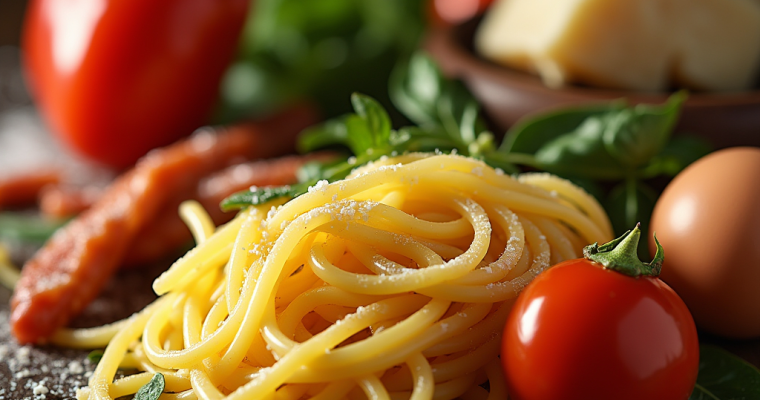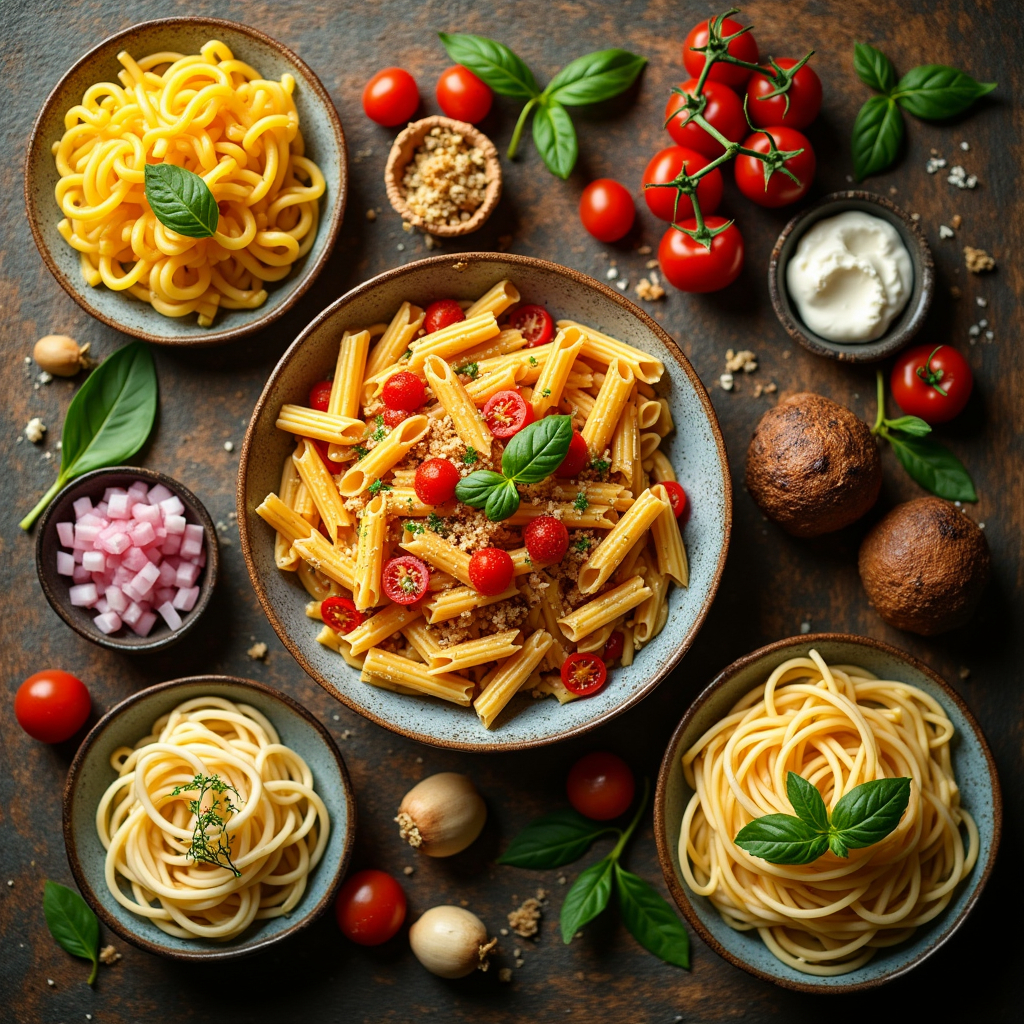What is the Best Pasta for Carbonara? A Guide to Choosing the Perfect Pasta Shape
Carbonara is one of the most revered Italian pasta dishes—a creamy, rich, and flavorful masterpiece with a history steeped in tradition. While its simplicity is key, one debate continues to stir passionate discussions in kitchens around the world: Which pasta shape is the best for carbonara?
Understanding Carbonara: The Harmony of Ingredients
efore diving into the best pasta options, let’s understand what makes carbonara special. This Roman dish is built on just a few core ingredients:
- Pasta – Typically dried pasta made from durum wheat.
- Guanciale – Cured pork jowl that provides a deep, savory flavor. Pancetta can be substituted if needed.
- Eggs – The base of the creamy sauce, lending a luscious texture without the need for heavy cream.
- Cheese – Traditionally Pecorino Romano, though Parmigiano-Reggiano is sometimes blended in.
- Black Pepper – A crucial seasoning that adds warmth and complexity to the dish.

The magic of carbonara lies in the emulsification of the egg-and-cheese mixture with the rendered fat from the guanciale, creating a silky sauce that clings to the pasta perfectly.
The Traditional Pasta Choice: Spaghetti
For generations, spaghetti has been the go-to pasta for carbonara, and for good reason. Its long strands allow the sauce to wrap around each bite, ensuring an even distribution of flavor and texture. The balance between firmness and creaminess makes spaghetti the quintessential choice.
Alternative Pasta Shapes That Work Well
While spaghetti remains the traditional favorite, other pasta shapes can provide unique textures and flavors:
- Bucatini – Slightly thicker than spaghetti and featuring a hollow center, bucatini traps the carbonara sauce inside, creating a satisfying burst of flavor with every bite.
- Fettuccine – Broader and flatter than spaghetti, fettuccine offers a luxurious mouthfeel, though it can sometimes hold too much sauce.
- Rigatoni – A tubular pasta with ridges that grip the sauce well. Though unconventional for carbonara, it provides a different, heartier experience.
- Tagliatelle – A delicate, ribbon-like pasta that works well when you want a smoother, more refined texture.

Pasta Geography: Regional Preferences Across Italy
Italy’s pasta culture varies significantly from region to region, with certain shapes being more popular in specific areas:
- Lazio (Rome) – The birthplace of carbonara, Rome favors spaghetti and rigatoni for many of its traditional dishes. Cacio e pepe and gricia also rely on these shapes.
- Emilia-Romagna – Known for fresh, egg-based pasta, this region prefers tagliatelle and fettuccine, perfect for rich, creamy sauces.
- Campania (Naples) – The homeland of dried pasta production, where spaghetti and paccheri are widely favored.
- Sicily – Short pasta like busiate and casarecce is popular, often paired with seafood or pistachio-based sauces.
- Puglia – Orecchiette reigns supreme here, frequently served with broccoli rabe and sausage.
Noodles vs. Pasta: Understanding the Difference
Though they may look similar, noodles and pasta differ significantly in ingredients and preparation.
- Pasta is traditionally made from durum wheat and water (sometimes with eggs for fresh varieties), giving it a firmer texture and resilience during cooking.
- Noodles, commonly found in Asian cuisine, use a broader range of ingredients like rice, buckwheat, or even starch-based flours, resulting in different textures and flavor profiles.
Cooking Tips for Perfect Carbonara
To achieve the perfect carbonara, keep these tips in mind:
- Use salted boiling water – This enhances the pasta’s flavor from the start.
- Reserve pasta water – A few tablespoons can help emulsify the sauce and create a creamy consistency.
- Toss pasta with sauce off heat – To prevent scrambling the eggs, combine everything away from direct heat for a smooth texture.
- Freshly cracked black pepper – For maximum aroma and depth, use freshly ground black pepper instead of pre-ground.
Final Verdict: Which Pasta is Best?
While there is no definitive answer, spaghetti remains the classic and most effective choice, offering the perfect texture and sauce absorption. However, bucatini provides a fun alternative, while rigatoni can be a heartier variation. Ultimately, the best pasta for carbonara is the one that suits your taste and cooking style.
What’s your favorite pasta for carbonara? Let’s keep the conversation going in the comments! 🍝✨
Would you like me to refine this further or add a specific recipe to complement it?
